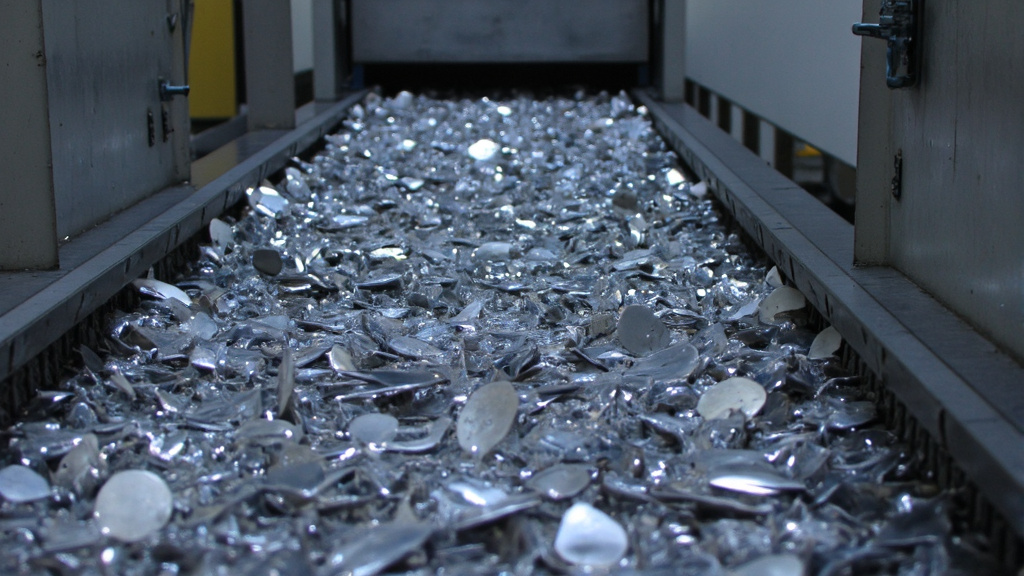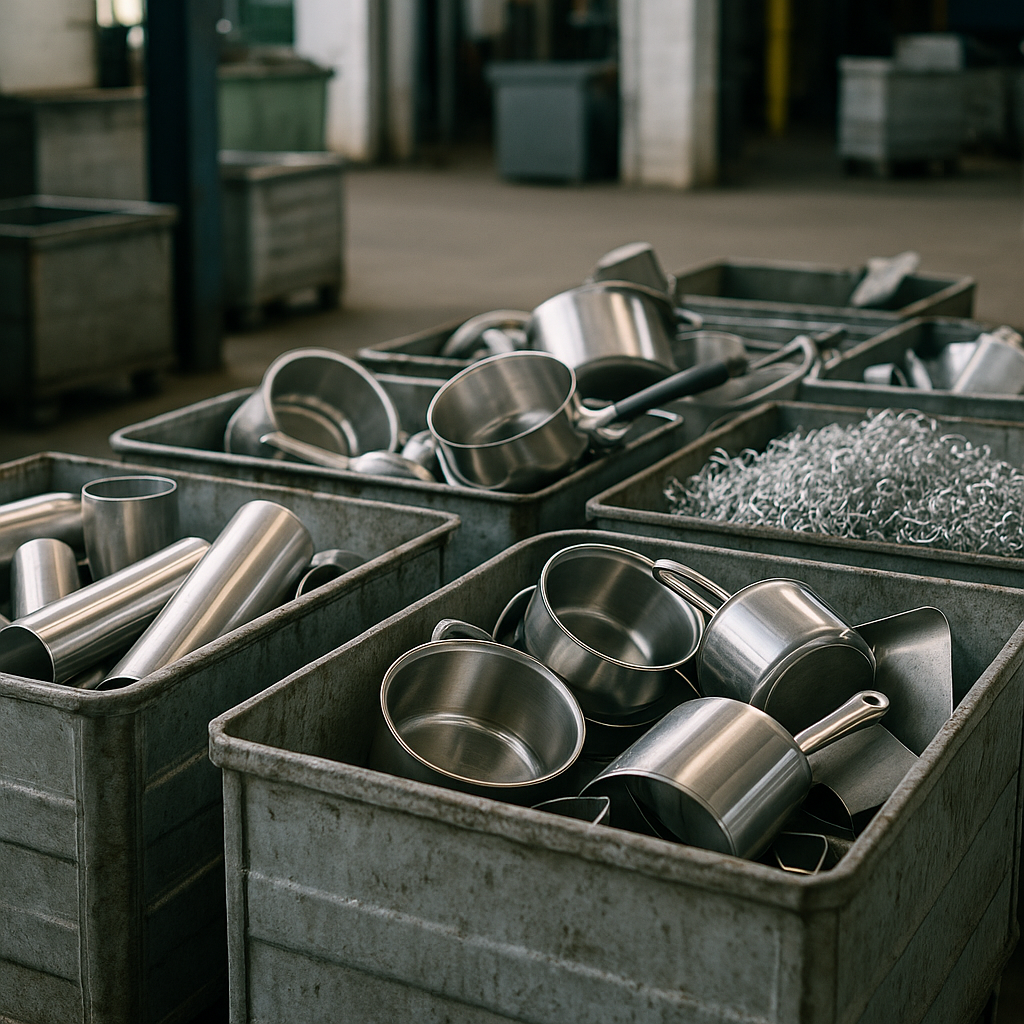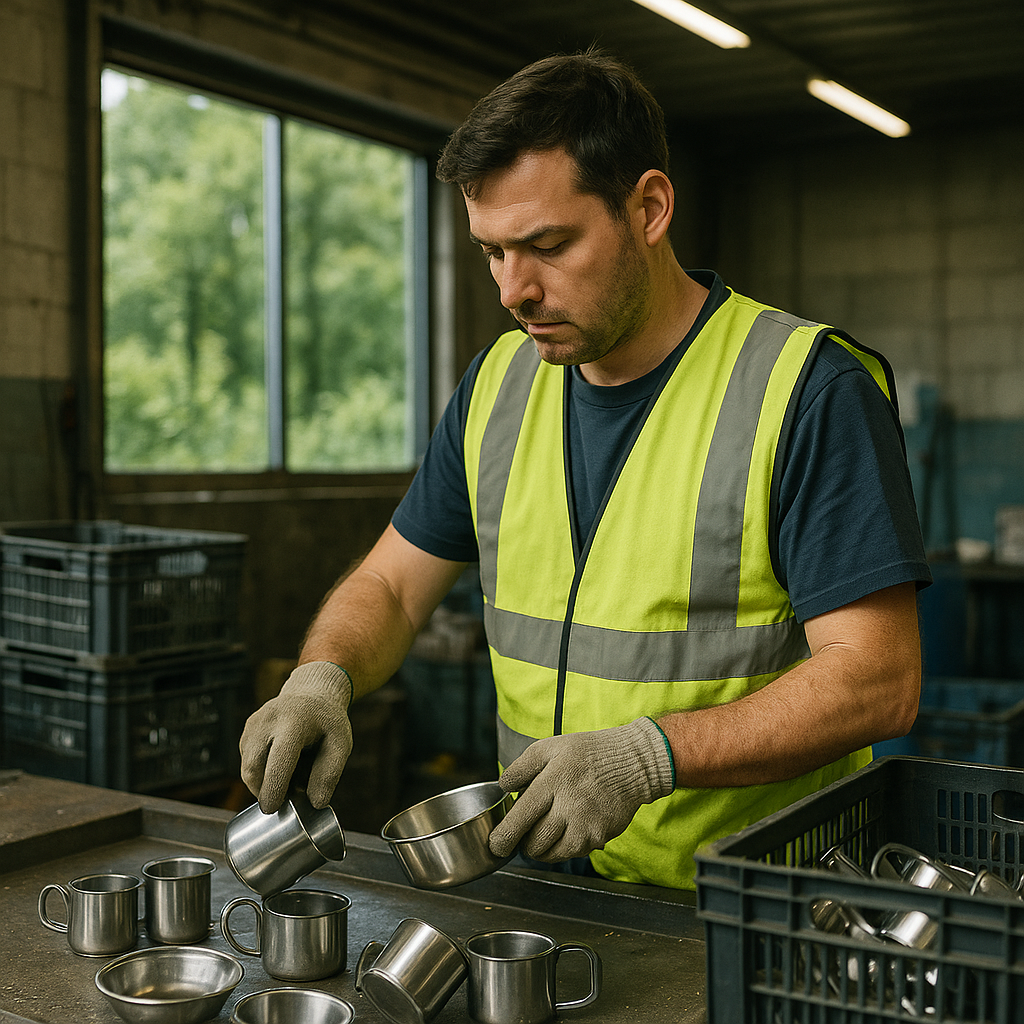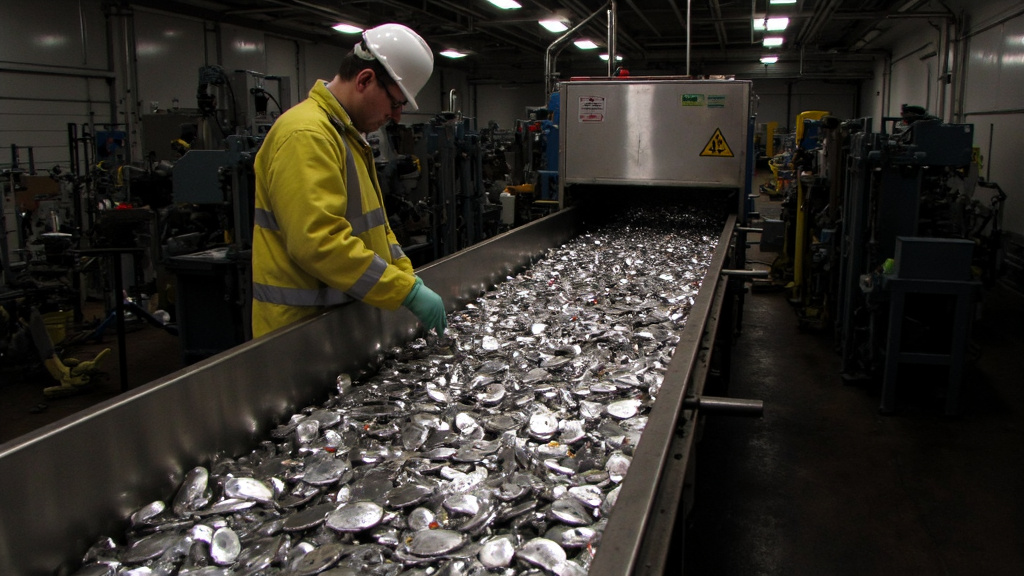5901 Botham Jean Blvd, Dallas, TX 75215
What is Stainless Steel Scrap: Learn the Basics
June 28, 2025Stainless steel scrap includes discarded stainless steel items that retain significant value even after their initial use has ended. From kitchen sinks to industrial machinery parts, these materials offer valuable recyclable resources rather than simply waste. The versatility and durability that make stainless steel valuable in its first life also ensure its continued value in recycling.
These valuable scraps originate from diverse industries. Manufacturing facilities generate offcuts and trimmings during production processes, while construction and demolition sites provide structural components and fixtures. Consumer goods such as appliances and cookware eventually reach end-of-life status, and industrial settings contribute obsolete machinery and equipment parts.
Unlike many materials that degrade during recycling, stainless steel maintains its essential properties through unlimited recycling cycles. The scrap undergoes collection, sorting, processing, and melting to create new stainless steel products with the same quality as those produced from virgin materials. This perfect recyclability makes stainless steel a cornerstone material in circular economy models, where resources maintain their highest utility through repeated lifecycle loops rather than the traditional take-make-dispose approach.
What Are the Different Types of Stainless Steel Scrap?

Stainless steel scrap is categorized into various grades, each with specific chemical compositions and properties. Understanding these differences helps recyclers and manufacturers maximize the material’s value in the circular economy.
304 Stainless Steel Scrap
304 grade is the most commonly recycled stainless steel, representing about 90-95% of stainless steel scrap. This austenitic steel contains approximately 18% chromium and 8% nickel, providing excellent corrosion resistance and durability.
Recycled 304 stainless steel is typically found in kitchen sinks, appliances, food processing equipment, and chemical containers. Its versatility makes it prevalent in both residential and commercial settings. The high chromium content creates a protective oxide layer that prevents rust and corrosion.
304 stainless steel scrap is often identified by grinding, which produces distinctive orange sparks. It is generally non-magnetic, though slight magnetic properties may develop after cold working.
302 Stainless Steel Scrap
302 grade is similar to 304 but contains slightly higher carbon content. This austenitic stainless steel also has about 18% chromium and 8% nickel, offering enhanced tensile strength compared to 304.
302 stainless steel is used in applications requiring good corrosion resistance combined with higher strength. Common sources include springs, fasteners, and various formed components where durability is crucial. Many scrap yards group 302 and 304 together due to their similar compositions.
The recycling value of 302 is comparable to 304 since their alloy compositions are so similar, maintaining their value well in the recycling stream.
316 Stainless Steel Scrap
316 stainless steel is a premium grade containing 16-18% chromium, 10–14% nickel, and 2–3% molybdenum. Molybdenum enhances its corrosion resistance, particularly against chlorides and industrial solvents.
This high-performance stainless steel is commonly sourced from marine equipment, chemical processing facilities, and medical devices. The pharmaceutical industry heavily relies on the 316 grade for its exceptional resistance to chemical corrosion. You might find it in boat fittings, surgical instruments, and food processing equipment used with acidic ingredients.
Due to its higher nickel and molybdenum content, 316 stainless steel scrap typically commands a higher price in the recycling market than 304 or 302. When grinding 316 stainless steel, it produces very small red sparks, aiding in identification.
Other Stainless Steel Grades
Beyond the common 300-series grades, you might encounter other types of stainless steel scrap:
Ferritic stainless steels (400-series) contain lower nickel content and are magnetic. 410 stainless steel falls into this category and is often found in automotive components, valves, and nozzles. These grades typically have lower recycling value due to reduced nickel content.
Duplex stainless steels combine properties of both austenitic and ferritic stainless steels. These contain high chromium with additions of nickel, copper, and molybdenum. They are valued for their exceptional strength and are commonly found in chemical processing equipment and structural components.
Martensitic stainless steels have higher carbon content, providing improved hardness but less corrosion resistance than austenitic grades. These are commonly used in cutting tools, surgical equipment, and valve components.
How Does the Stainless Steel Recycling Process Work?

The recycling process for stainless steel begins with collecting scrap from various sources including construction sites, manufacturing facilities, and household appliances. Each source contributes different grades and types of stainless steel to the recycling stream.
The collected stainless steel is then sorted carefully. This crucial step ensures accurate separation of different grades and compositions. Modern recycling facilities use technologies like X-ray fluorescence (XRF) spectrometry to identify the exact composition of each piece, enabling precise categorization based on chromium, nickel, and other alloy content.
After sorting, the stainless steel scrap is fed into industrial shredders. These powerful machines break down the material into smaller, more manageable pieces, creating uniformly sized fragments that melt more efficiently later. Shredding also helps reveal and remove any non-metal components that might have been overlooked during initial sorting.
The shredded stainless steel is then placed in large industrial furnaces, where temperatures exceed 2,500°F (1,370°C). At these extreme temperatures, the durable stainless steel alloys transform into molten metal. The melting process homogenizes the material, forming a consistent molten mixture for new stainless steel products.
The next step is refinement, where impurities are meticulously removed from the molten metal. Techniques such as magnetic separation and chemical treatments extract unwanted elements, ensuring the final product meets quality standards. Metallurgists may adjust the composition by adding specific elements to achieve desired properties for the recycled stainless steel.
After refinement, the molten stainless steel moves to casting operations. It solidifies into forms like ingots, billets, or slabs according to manufacturing requirements. These standardized shapes serve as the raw material for new stainless steel products. The casting process must be carefully controlled to ensure structural integrity and quality.
Finally, the recycled stainless steel is sent to manufacturing facilities where it is transformed into new products, such as kitchen appliances, automotive components, and construction materials. Recycled stainless steel maintains corrosion resistance and durability, performing identically to newly produced material.
This comprehensive recycling process delivers substantial environmental benefits by conserving natural resources, reducing the need for mining raw materials like iron ore, chromium, and nickel. Energy savings are impressive, with recycled stainless steel production requiring up to 60% less energy than creating new steel from virgin materials. Greenhouse gas emissions also decrease significantly, with studies showing reductions of approximately 1.5 kg of CO₂ per kilogram of stainless steel recycled.
The cyclical nature of stainless steel recycling exemplifies circular economy principles in action. Unlike many materials that degrade during recycling, stainless steel maintains its properties regardless of how many times it is recycled. This infinite recyclability makes stainless steel one of the most sustainable metals in use today.
What Factors Influence Stainless Steel Scrap Prices?

Stainless steel scrap prices are highly volatile due to various market forces. In the first half of 2024, these fluctuations were influenced by changing global economic conditions and demand patterns. Prices typically range from $0.50 to $2.50 per kilogram, shaped by several factors.
Raw Material Costs
The prices of nickel, chromium, and other alloying elements directly affect stainless steel scrap values. When the global prices of these raw materials rise, the value of scrap containing them also increases. Nickel-bearing stainless grades (300-series) command higher premiums than 400-series scrap.
Recently, the rising value of nickel on exchanges such as the Shanghai Futures Exchange has driven up prices for nickel-rich stainless scrap. The price differential between high-nickel and low-nickel content grades continues to grow, enhancing revenue potential.
Global Supply Constraints
Supply restrictions significantly impact market prices. Kazakhstan’s extended ban on scrap exports and similar measures in other countries have tightened global supply. High freight costs have limited imports from Asia to Europe, further depleting available inventories.
Collection rates remain below historical averages in many regions, increasing competition among buyers seeking limited supplies. Some processors now offer payment premiums to secure reliable supply streams, especially for cleanly segregated industrial material with higher alloy content.
Regional Economic Conditions
Market prices vary significantly by region due to local economic factors. In Europe, declining steel production and reduced construction and manufacturing activity have limited scrap generation. Asian markets, particularly China, face challenges from economic struggles in sectors like real estate, which traditionally drive stainless steel demand.
In North America, domestic tariff policies have strengthened local mills’ positions. The implementation of broader tariffs on steel imports has increased domestic scrap purchasing activity, supporting higher prices than in other regions.
Grade and Quality Considerations
Not all stainless steel scrap commands the same price. Cleanliness, alloy content, and proper segregation significantly impact value. Contaminated or poorly sorted scrap receives substantial discounts. Processors increasingly focus on high-nickel content grades to maximize revenue potential.
German scrap dealers have reported significant price increases for V-2A and V-4A stainless grades, reflecting rising alloy surcharges and tightening availability. Contaminants can significantly reduce the value of otherwise premium material.
Seasonal and Cyclical Factors
Seasonal slowdowns in construction and manufacturing influence scrap generation and pricing. The market typically experiences price adjustments reflecting these patterns. In early 2024, prices remained relatively stable despite these cycles due to moderate demand balancing tight supply.
Industry analysts suggest that stainless steel scrap prices will likely fluctuate in the coming months, depending on macroeconomic policies and shifts in raw material availability. Projections indicate prices may improve from September 2024 onward as economic conditions ease in the global steel market.
How Can Individuals and Businesses Benefit from Stainless Steel Scrap?

Stainless steel scrap is not just waste material; it is a valuable resource offering numerous benefits for individuals and businesses. Its recyclability—allowing it to be recycled indefinitely without losing quality—provides unique opportunities for financial gain and environmental stewardship.
Financial Benefits for Individuals
Individuals can turn unwanted stainless steel items into cash while supporting sustainability, with scrap yards and recycling centers offering competitive rates due to its inherent value.
The market value for stainless steel scrap typically ranges from $0.50 to $2.50 per kilogram, depending on grade, quality, and current market conditions. Homeowners renovating kitchens can sell old appliances, sinks, and cookware instead of sending them to landfills.
Here are practical ways individuals can benefit from recycling stainless steel:
- Collect old stainless steel kitchenware, appliances, and tools for sale to local recycling centers
- Remove non-metal components before recycling to maximize scrap value
- Compare prices from different scrap yards to get the best rate
- Bundle scrap with neighbors or family to meet minimum weight requirements at recycling facilities
Business Advantages of Stainless Steel Recycling
Companies in various industries can significantly benefit from incorporating stainless steel recycling into their operations, with economic advantages extending beyond cost savings.
Manufacturing businesses can reduce raw material costs by using recycled stainless steel in their production processes. Energy savings are substantial since recycled stainless steel requires up to 75% less energy to produce compared to virgin materials.
Companies can leverage recycling efforts in several ways:
- Implement scrap collection systems to capture and sell manufacturing offcuts and end-of-life products
- Source recycled stainless steel for production to reduce material costs while maintaining quality
- Develop closed-loop recycling programs where products are designed for easy disassembly and material recovery
- Highlight sustainability practices in marketing to attract environmentally conscious customers
Environmental Conservation Benefits
Recycling stainless steel impacts the environment beyond waste reduction. Each ton of recycled stainless steel conserves approximately 2,500 pounds of iron ore, 1,400 pounds of coal, and 120 pounds of limestone.
The recycling process significantly reduces greenhouse gas emissions compared to primary production. According to industry data, recycling stainless steel can lower CO2 emissions by 1.5 kg per unit recycled.
Other environmental benefits include:
- Reduced mining activity, minimizing habitat destruction and soil erosion
- Lower water consumption in metal production processes
- Decreased air pollution from manufacturing operations
- Extended landfill capacity by diverting metal waste from disposal sites
Supporting Sustainable Practices
Beyond direct financial and environmental benefits, participating in stainless steel recycling contributes to broader sustainability goals. Both individuals and businesses can actively create a more circular economy.
Supporting policies that promote recycling infrastructure development helps create jobs in the recycling sector. The stainless steel recycling industry generates employment opportunities in collection, processing, and manufacturing.
Ways to support sustainable stainless steel practices include:
- Purchase products made from recycled stainless steel to create market demand
- Advocate for expanded recycling programs in your community
- Educate others about the benefits of metal recycling
- Partner with certified recycling facilities that follow responsible processing methods
By engaging in stainless steel recycling, individuals and businesses contribute to resource conservation while potentially gaining financial benefits. The high recyclability of stainless steel makes it an ideal material for those seeking to participate in the circular economy, where materials maintain their value and utility through multiple lifecycles.
Conclusion: The Future of Stainless Steel Scrap Recycling
Stainless steel scrap is more than mere waste; it is a valuable resource with significant potential in our circular economy. Recycling offers substantial environmental benefits by conserving natural resources, reducing energy consumption by up to 33%, and minimizing greenhouse gas emissions. These advantages, combined with economic incentives, create a sustainable solution that addresses both ecological concerns and market demands.
As technological innovations enhance sorting capabilities, processing techniques, and energy efficiency, stainless steel recycling is set to play an increasingly important role in sustainable manufacturing. Businesses and communities embracing these practices not only contribute to environmental conservation but also participate in a growing market that values resource efficiency and responsible production. For expert guidance on your recycling needs, contact Okon Recycling at 214-717-4083.
